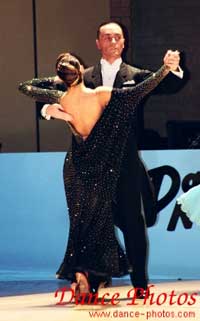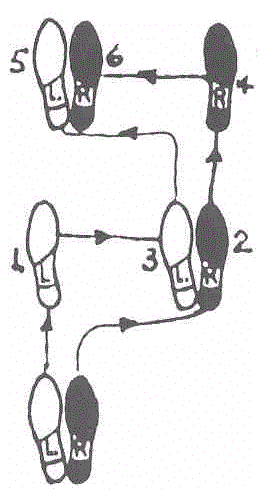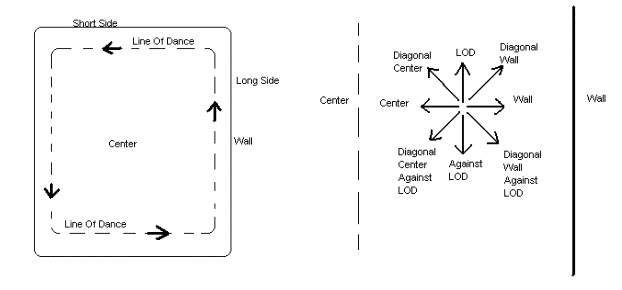
A Physicist Guide

to Dancing
Basics of Dancing
In physics when you have a collection of particles, they are called a SYSTEM. Well, in dance the SYSTEM consist of the leader and the follower. In this case, you, Mr. Physicist, and your wife. And because there are no outside forces acting on your SYSTEM, you can be called an ISOLATED SYSTEM.
The way a couple holds one another is called the dance frame. As seen in the image below, the man places his right hand on the womans back around her shoulder blade. He then takes the womans right hand into his left hand. Its important that the man keeps a very upright and rigid frame. This rigid frame helps when initiating certain dance moves. When the leader is ready to initiate a move, he will either twist his upper body in an attempt to get his partner to respond, or he will apply a small Force amount to the back of his partner in order to turn her.

courtesy of www.dance-photos.com
Now, in order to move around the dance floor, this ISOLATED SYSTEM needs to have a positive NET FORCE in a given direction. And since an object at rest remains at rest, according to NEWTONS FIRST LAW OF MOTION , you, the leader, will have to provide the FORCE for the system. Its pretty simple, and mostly intuitive. You'll have to take into account the MASS of the sytem and the VELOCITY at which you want to to travel around the dance floor. The best method to determine VELOCITY, is simply to move at the same speed as the other couples. Now, to provide this NET FORCE, you simply step forward. According to NEWTONS THIRD LAW OF MOTION., if you exert a FORCE on your partner in a given direction, then she will exert a FORCE on you in the opposite direction. But when dancing, that REACTION FORCE will last for such a brief period of time that you probably won't even notice it. Actually, your partner will probably step backwards seemingly instantaneously.
Forward Box Step
Below are the instructions and a diagram of the basic forward movement for the leader. That's You. As you can see, you'll start with your feet together. At the end of this basic step your feet should still be together. You should also be traveling in a relatively straight line, meaning, you should be facing in the same direction when you finish this step as when you started it. Now of course you don't want to run your partner into a wall, so at some point you'll execute a half box turn or some other turning move. The half box turn is mentioned in later on. Now, remember that your partner is facing you and is doing the exact same movements, except backwards.
To perform a basic forward box step:
Basic forward step
 ur
ur
http://www.centralhome.com/ballroomcountry/waltz_steps-1.htm
Hopefully, you've just completed a successful basic forward box step.
Line of Dance
Gentleman, this next bit of imformation is extremely important. Repeat: EXTREMELY IMPORTANT. When performing a dance that involves circling the dance floor, you and your part should be moving in the direction of the dance, otherwise called the LINE OF DANCE. As shown in the image below, the line of dance is always counter-clockwise. If you choose to ignore this advice, then you and your partner will experience numerous ELASTIC an INELASTIC COLLISIONS. No one will be happy

www.umich.edu/~umbdc/haagr/alignment_lod.htm